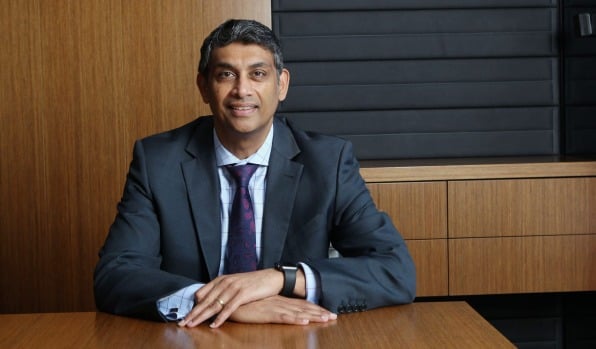The article was written by David Rogers and first published on The Australian here.
When it comes to innovation in stockbroking, Arnie Selvarajah is a big believer in client feedback and technology.
The Bell Direct CEO is aiming to stay ahead of price-cutting rivals through the use of technology like robo-advice and mFunds via the ASX platform to target a niche of investors who are prepared to pay for advice at the right price.
“My own view is that advice is not dead, it just has to be delivered in a different way,” says the 52 year old Selvarajah, a former executive manager of broking at CommSec.
“Ten years ago you would say you can’t be customer-centric and be profitable, but technology is allowing us to provide better tools and better customer service at lower prices.”
In his view, advice has to be delivered in a customer-centric and cost-effective way, and the way to achieve that is by adapting automated technology like robo in the context of financial advice. By applying portfolio construction solutions via an automated tool he believes an adviser who might otherwise service 150 clients — 50 of them to a high standard — could potentially look after 500 clients equally well, and at a lower average price.
MFunds — unlisted managed funds admitted for settlement under the ASX operating rules and available to investors through the mFund Settlement Service — are another example of how technology is making the process of investing more efficient for retail clients and financial planners.
“One of the things driving that change is the increasing popularity of self-managed super funds,” Selvarajah says. “While they have traditionally invested in equities and cash, in the last few years the conversations they are having with their advisers has been more around holistic portfolios. So their ability to come up with solutions from a single provider is becoming more important. That was one of the deciding factors for us to go down the mFund path.”
Bell Direct was conceived eight years ago by Australian stockbroking doyen Colin Bell, chairman of Bell Financial Group, and managing director Alistair Provan, together with Steven Goh, a former CEO of discount stockbroker Sanford. Selvarajah came across from CommSec in 2008. Since then, Bell Direct has lived up to its billing as a customer-focused broking service offering better value for money than the incumbents.
“We really started to take advantage of the confluence of technology and our experience in the business,” Selvarajah says. “We’ve got a button on our website that says ‘your ideas’ so any client can have their say, and I see every one of those, probably seven or eight a day. Every two or three months we upload new features, so it drives our innovation and growth.”
In an industry where the boundaries between broking, financial planning and general wealth management have blurred, Bell Direct is aiming to develop solutions to help clients think more broadly about their wealth, rather than just how to buy a dozen or so stocks for their portfolio.
“The financial planning industry is a key focus for us and we have found that planners who were traditionally only investing on behalf of their clients in managed funds, were now looking at more holistic portfolio solutions,” Selvarajah says.
“After the global financial crisis, clients become more financially literate, and a lot of pressure was put on the financial planners for more direct equities and less management fees. So they have had to look more holistically at how they are solving clients’ needs from a broader asset allocation perspective. Now it might include direct equities, ETFs and managed funds, allowing better portfolio construction at a lower average cost.”
Bell Direct is also targeting a growing segment of people who generally don’t want to get advice, because they don’t see value in it, but aren’t confident enough to manage things themselves. Selvarajah says it’s been estimated that there are $1.5 trillion worth of assets belonging to this middle segment.
“The issue for them is that ultimately they will get a less-than-optimal outcome for their investments, and if you think 60 to 80 per cent of most people’s portfolios is superannuation related, this is a key issue for us to solve as an industry, because we want to make sure these people are getting great investment outcomes. So for that sector, we are developing automated solutions that can help.”
Selvarajah says the main success of robo advice has been in the lower end of the market: investors with smaller balances who are less concerned about risk. He finds that people are happy to be very self-directed until they have about $100,000 in their account, then they tend to go very passive and at that point they start to need some help.
“I think what we’ve seen with Robo in Australia is very much the marketing part. We haven’t really seen what the possibilities are to apply it in a financial-advice context. That’s the way we’re heading and we’ve already built some of the components on this.”
In his view, research is an area where robo has potential to disrupt the status quo.
“I think the delivery of research is potentially open for disruption,” he says.

